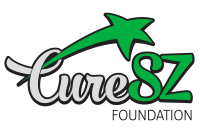
Stephen Rush, MD
Treatment Resistant Depression (Part One of Two)
See Treatment Resistant Depression Part Two
In recent decades, as the stigma around mental health has begun to dissolve, it has become more common for people to openly talk about feeling “depressed.” But what does that mean? What are the differences between feeling “sad” and feeling “depressed?” Sadness frequently occurs in response to loss, disappointment or when facing difficult problems. Stressful events such as the loss of a loved one, loss of a job or income, failing an exam or the breakup of a relationship often make us feel sad. This emotion stems from a triggering event or situation and usually passes with time or resolution of the stressful event.
But when sadness doesn’t go away with time or the resolution of stressors and interferes with the ability to function at home, at work, or in relationships, it may be “depression.” While sadness is a normal human emotion, depression is a psychiatric condition with emotional and physical symptoms that disrupt our ability to manage everyday life.
Many people use the word “depression” when describing sadness and “clinical depression” to describe the medical condition that requires treatment by trained experts. Other terms for “clinical depression” include Major Depressive Disorder and Bipolar Depression. Throughout this article, we will use the word “depression” to refer to a psychiatric depressive illness, diagnosed by a doctor, therapist or counselor and requiring specialized treatment.
WHAT IS DEPRESSION?
A depressive episode occurs when an individual experiences a period of at least 2 weeks during which they have five or more of the following symptoms, with at least one of those symptoms being either depressed mood or loss of interest or ability to feel pleasure.
Symptoms include 1:
– Depressed mood
– Loss of interest/pleasure
– Decreased appetite/weight loss or increased appetite/weight gain
– Insomnia or hypersomnia
– Psychomotor agitation or retardation
– Fatigue
– Feeling worthless or excessive/inappropriate guilt
– Decreased concentration
– Thoughts of death/suicide
Decreased ability to function, when depressed, is often due to a lack of interest in normally enjoyable activities, decreased energy, lack of motivation and difficulty concentrating on otherwise easy tasks. When untreated, this disease can result in a decline in grades at school, poor performance at work and withdrawal from social interaction with friends and family.
A 2020 survey found 21 million people in the United States, or 8.4% of the population, had experienced a depressive episode at some time in their lives2. While depression can affect persons of any age, ethnicity or gender, it is usually first diagnosed in early adulthood, with 17% of people ages 18-25 experiencing at least one episode of depression. Women are almost 2 times more likely to develop depression than men and the highest prevalence of depression occurs in people of mixed ethnicity3.
Fortunately, depression can be successfully treated, thanks to the availability of specific medications and psychotherapies. However, it is important that any treatment begins early in the course of depression, before it results in poor occupational, academic or social functioning.
The most well-known and first-line treatments for depression are medications often called “antidepressants.” There are several classes of FDA-approved antidepressants, all of which have effects on “neurotransmitters,” or the chemical messengers in the brain that impact thoughts, feelings, and actions. The chemical messengers most often targeted in treating depression are serotonin, norepinephrine, and dopamine.
While all antidepressants can produce similar improvements in depression, they differ in their tolerability due to side effects and their safety concerns in certain populations. The Selective Serotonin Reuptake Inhibitors (SSRIs) are often the first type of antidepressants prescribed to. Prozac, developed in 1987, was the first SSRI approved by the FDA, soon followed by others including Zoloft, Paxil, Celexa and Lexapro. Other classes of antidepressants are the Serotonin-Norepinephrine Reuptake Inhibitors (SNRIs) and the “atypical antidepressants” such as Wellbutrin, a Norepinephrine-Dopamine Reuptake Inhibitor (NDRI) and Remeron, which affects serotonin and norepinephrine in unique ways.
Older antidepressants, the Tricyclic Antidepressants (TCAs) and Monoamine Oxidase Inhibitors (MAOIs), are less tolerable due to more severe side effects and less favorable safety profiles. As a result, TCAs and MAOIs are typically reserved for depression that has failed to respond to at least two or three of the newer medications: SSRIs, SNRIs or atypical antidepressants4.
Research also shows that psychotherapy, or counseling, is as effective in treating depression as antidepressants, both acutely and long-term. Many different types of psychotherapy can treat depression, including Cognitive Behavioral Therapy and Interpersonal Therapy, amongst others. These approaches involve identifying life events, distorted ways of thinking and unhelpful behaviors that contribute to depression, followed by developing specific skills that help with management of the symptoms of depression. Most importantly, the success of psychotherapy depends on a positive relationship between the therapist and the patient. In fact, a positive therapeutic relationship can be the number one predictor of successful treatment5.
WHAT HAPPENS WHEN TREATMENT ISN’T WORKING?
For 30-50% of depressed patients, standard treatments are not effective to adequately treat depression. Depressed patients who have not improved after at least 2 trials of antidepressant medications are often considered to have “treatment resistant depression” or TRD. A “trial” requires the medication be taken for 8-10 weeks at an effective dose, or an inability to tolerate the side effects of these medications at lesser doses.
TREATMENT RESISTANT DEPRESSION (TRD)- THE NEED FOR TREATMENT
Having TRD increases the chances that a depressive episode will become severe or chronic, lasting 12 months or longer. TRD increases the toll that depression takes on an individual’s level of functioning such that people with this refractory form of depression have a significantly lower quality of life as well as higher impairments in social and occupational function.
The economic burden of TRD is a shocking $43.8 billion annually. This is 47% of the economic burden and 50% of the total cost of care for all patients with any form of depression6.
Patients with TRD are more likely to have suicidal ideation (38% vs 24%) and previous suicide attempts (14% vs 10%) when compared to patients who respond to early treatments7. These statistics highlight the importance of early diagnosis and treatment.
IT’S NOT SIMPLE
There are psychiatric illnesses that result in symptoms that are also seen in depression. Post-traumatic stress disorder, personality disorders, anxiety disorders and even attention deficit disorder can result in the same symptoms seen in depression. In such cases, treatment of the primary illness can improve symptoms of depression, often using treatments different than those used to treat depressive disorders.
Further, other psychiatric illnesses can occur at the same time as depression and require more complex treatment. The most common comorbid psychiatric illnesses in patients with depression are anxiety disorders (Generalized Anxiety Disorder, Panic Disorder, Obsessive Compulsive Disorder), Post-traumatic Stress Disorder, Substance Use Disorders (Alcohol abuse/dependence) and certain personality disorders. Effective treatment, here, involves addressing both depression and any other psychiatric illnesses also present. Unfortunately, the presence of comorbid psychiatric illnesses increases the risk of developing TRD.
Additionally, there are medical diseases that can result in symptoms of depression including thyroid disease, heart disease (especially heart attacks), stroke, anemia, or diabetes. In other cases, the tratamento of medical illness can cause depression including certain therapies for autoimmune diseases, liver disease, high blood pressure, inflammation and even acne.
Finally, there are also situations in which depression appears resistant to treatment but may be the result of preventable factors that decrease response to treatment. These include poor compliance with prescribed medications, insufficient doses of antidepressant medications and inadequate duration of treatment. If these conditions have not been met, lack of response to treatment does not indicate true TRD and appropriate trials of medications should be considered8.
Next time, we will review treatment options for those with Treatment Resistant Depression.
Referências:
- American Psychiatric Association. (2013). Anxiety disorders. In Diagnostic and statistical manual of mental disorders(5th ed.). https://doi.org/10.1176/appi.books.9780890425596
- Zhang, Z., Jackson, S. L., Gillespie, C., Merritt, R., & Yang, Q. (2023). Depressive Symptoms and Mortality Among US Adults. JAMA network open, 6(10), e2337011. https://doi.org/10.1001/jamanetworkopen.2023.37011
- Goodwin, R. D., Dierker, L. C., Wu, M., Galea, S., Hoven, C. W., & Weinberger, A. H. (2022). Trends in U.S. Depression Prevalence From 2015 to 2020: The Widening Treatment Gap. American journal of preventive medicine, 63(5), 726–733. https://doi.org/10.1016/j.amepre.2022.05.014
- Hillhouse, T. M., & Porter, J. H. (2015). A brief history of the development of antidepressant drugs: from monoamines to glutamate. Experimental and clinical psychopharmacology, 23(1), 1–21. https://doi.org/10.1037/a0038550
- Stubbe, D. E. (2018). The Therapeutic Alliance: The Fundamental Element of Psychotherapy. Focus (American Psychiatric Publishing), 16(4), 402–403. https://doi.org/10.1176/appi.focus.20180022
- Zhdanava, M., Pilon, D., Ghelerter, I., Chow, W., Joshi, K., Lefebvre, P., & Sheehan, J. J. (2021). The Prevalence and National Burden of Treatment-Resistant Depression and Major Depressive Disorder in the United States. The Journal of clinical psychiatry, 82(2), 20m13699. https://doi.org/10.4088/JCP.20m13699
- Corral, R., Alessandria, H., Agudelo Baena, L. M., Ferro, E., Duque, X., Quarantini, L., Caldieraro, M. A., Cabrera, P., & Kanevsky, G. (2022). Suicidality and Quality of Life in Treatment-Resistant Depression Patients in Latin America: Secondary Interim Analysis of the TRAL Study. Frontiers in psychiatry, 13, 812938. https://doi.org/10.3389/fpsyt.2022.812938
- McIntyre, R. S., Alsuwaidan, M., Baune, B. T., Berk, M., Demyttenaere, K., Goldberg, J. F., Gorwood, P., Ho, R., Kasper, S., Kennedy, S. H., Ly-Uson, J., Mansur, R. B., McAllister-Williams, R. H., Murrough, J. W., Nemeroff, C. B., Nierenberg, A. A., Rosenblat, J. D., Sanacora, G., Schatzberg, A. F., Shelton, R., … Maj, M. (2023). Treatment-resistant depression: definition, prevalence, detection, management, and investigational interventions. World psychiatry: official journal of the World Psychiatric Association (WPA), 22(3), 394–412. https://doi.org/10.1002/wps.21120

